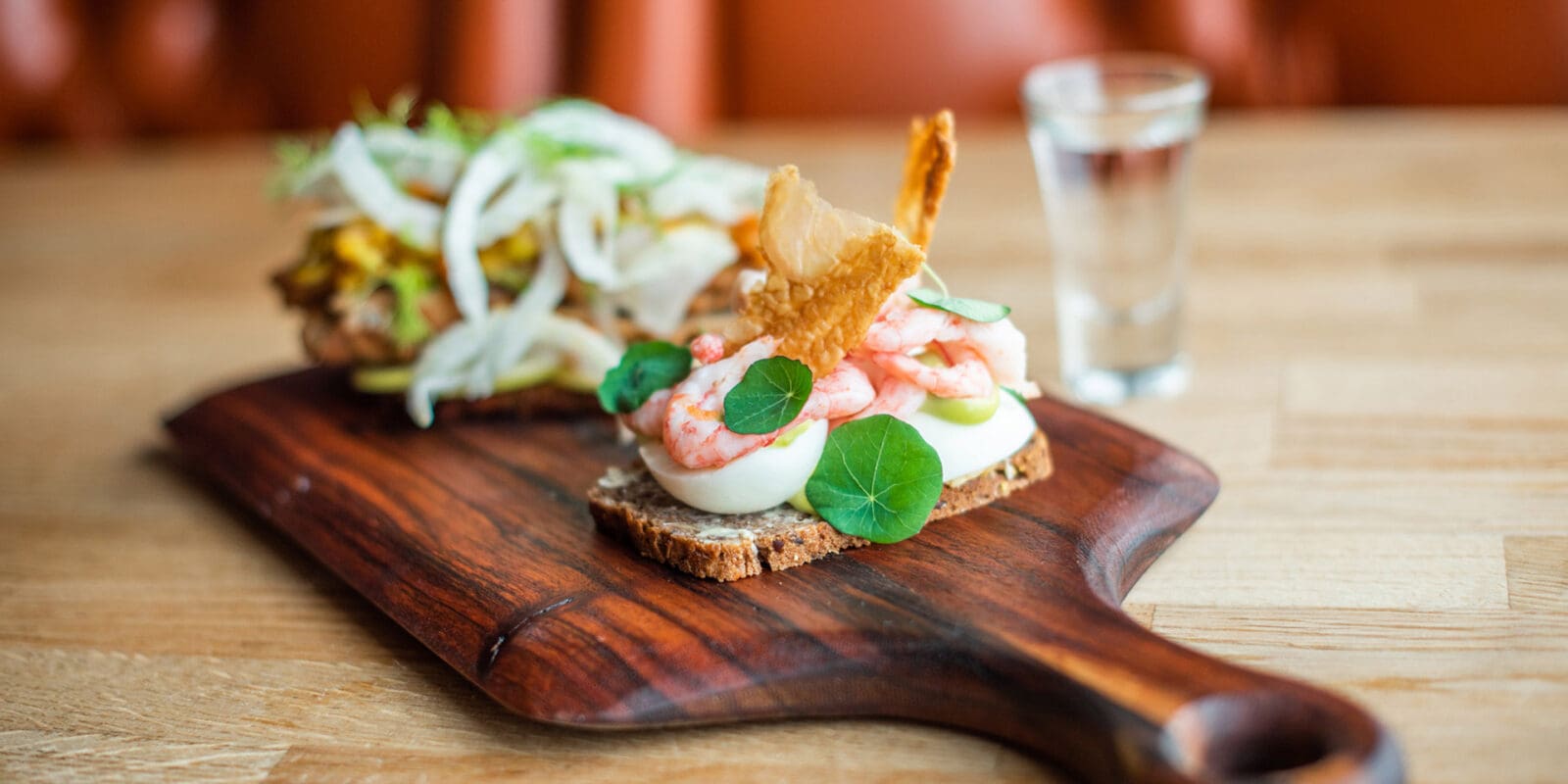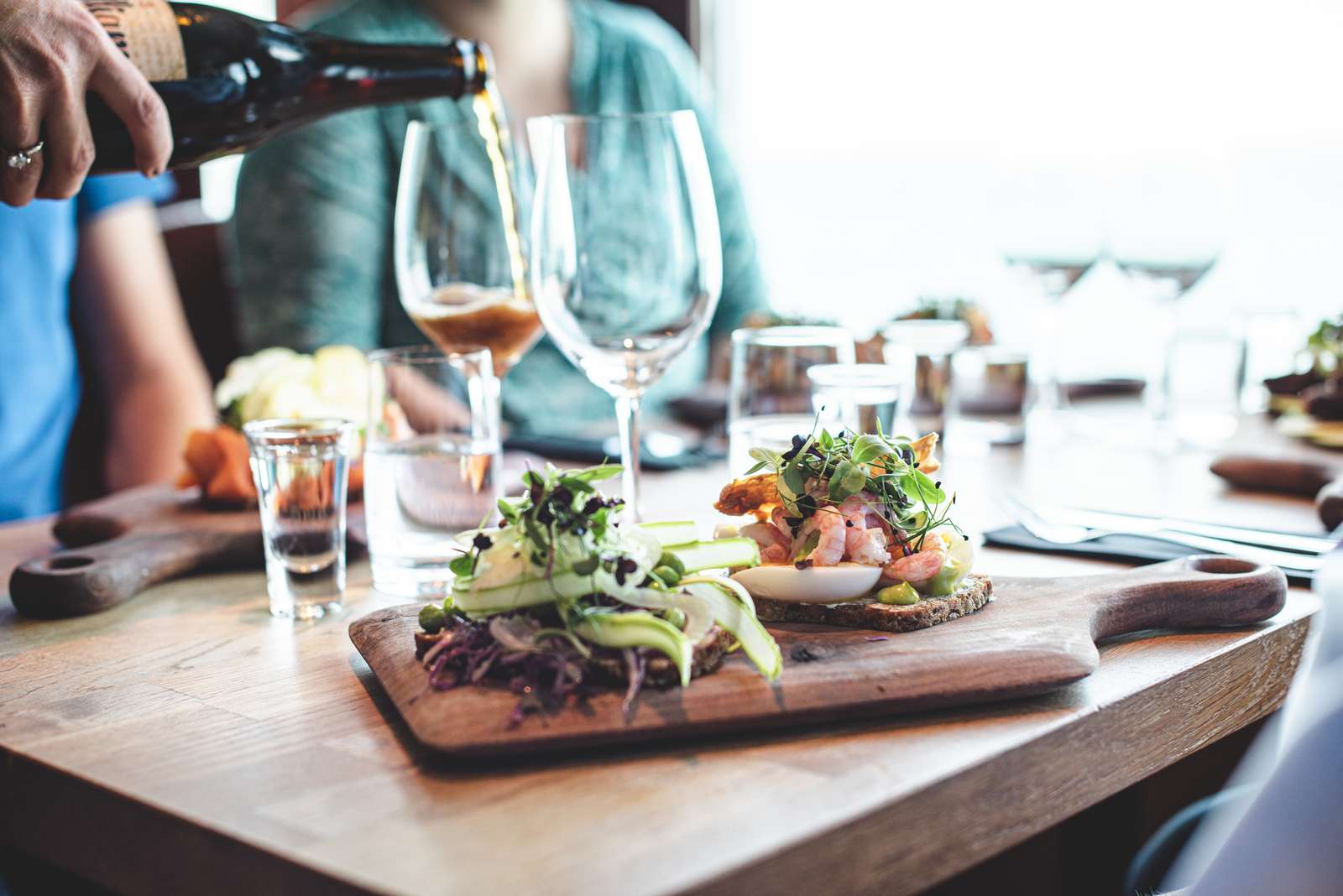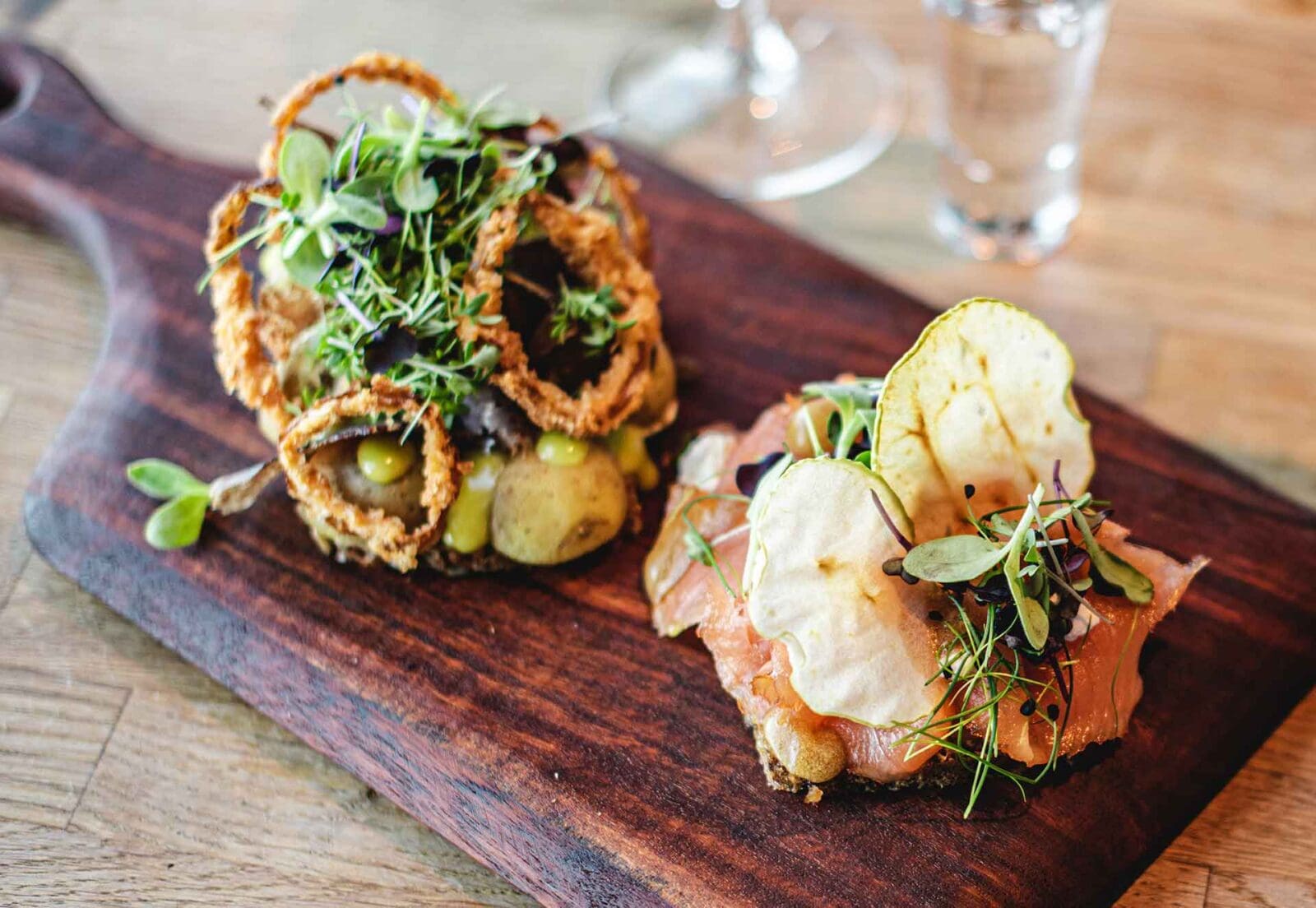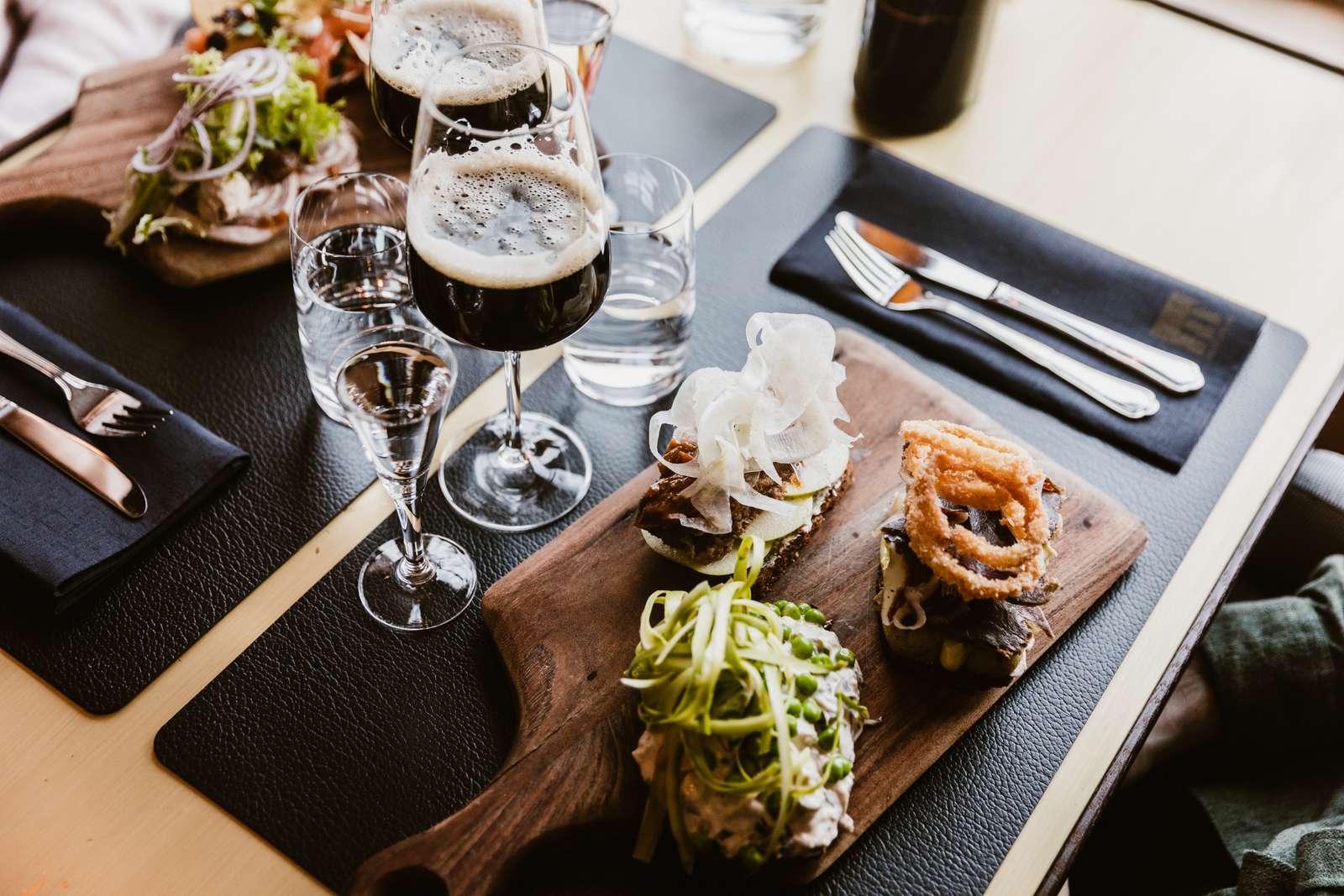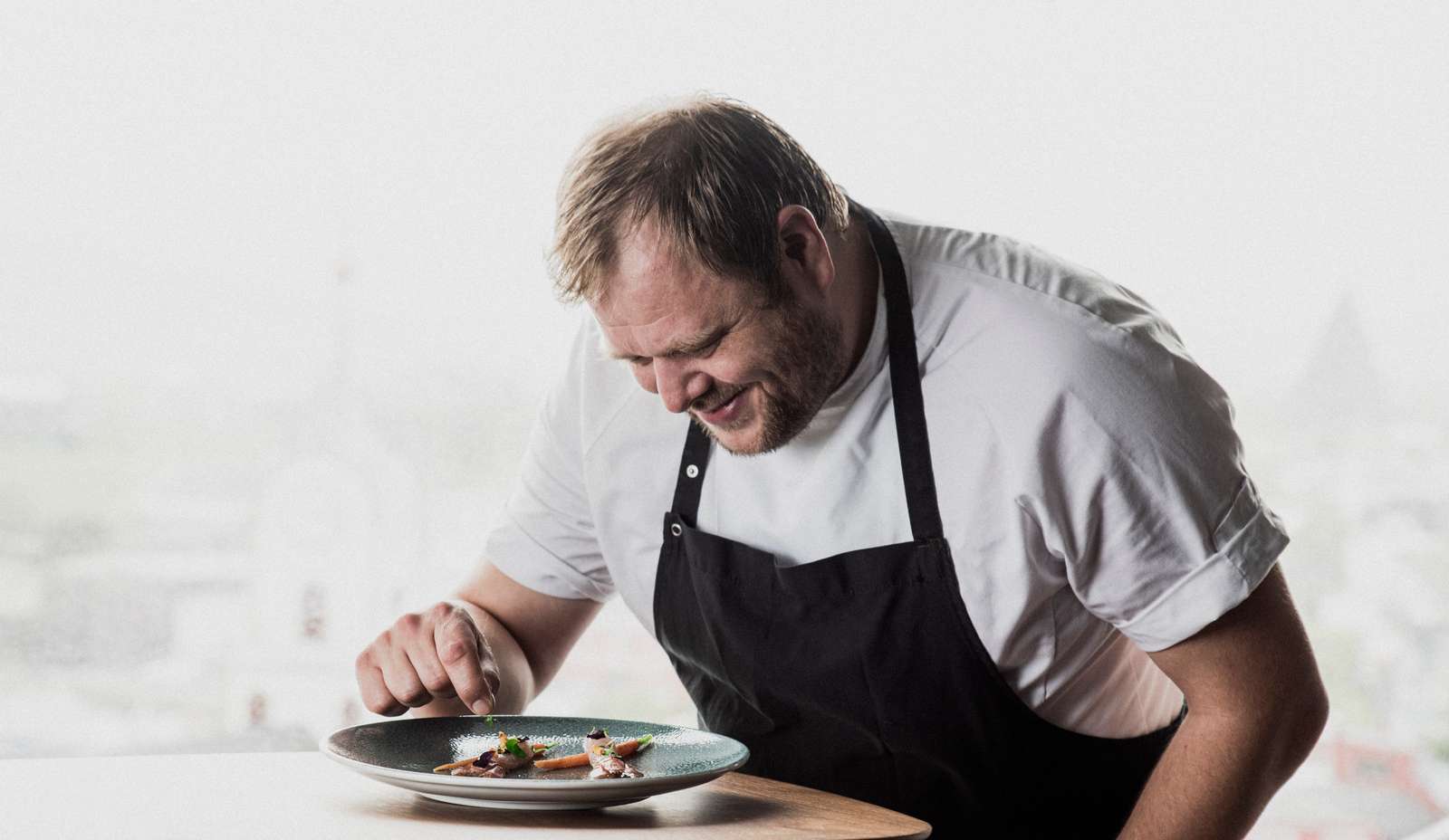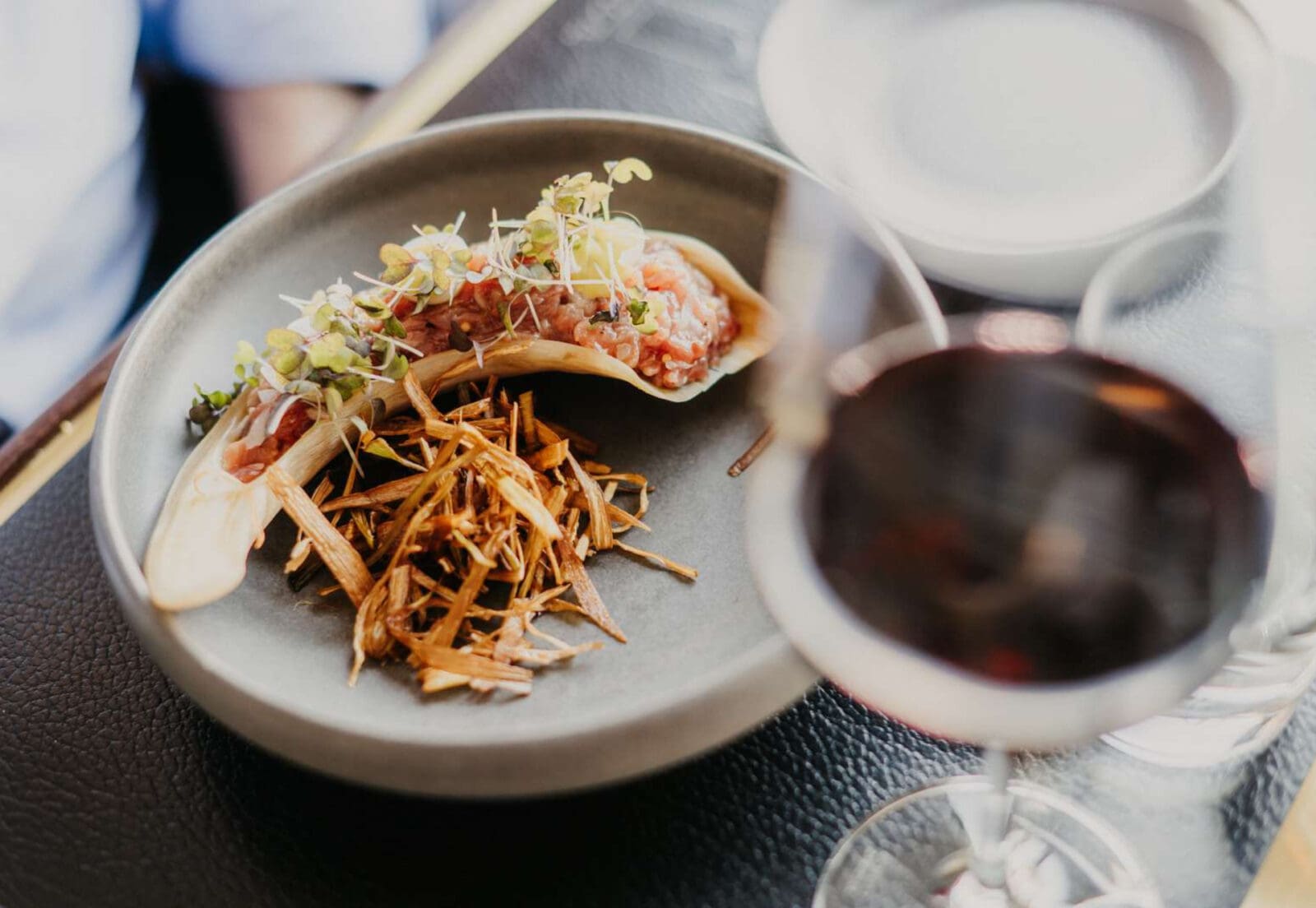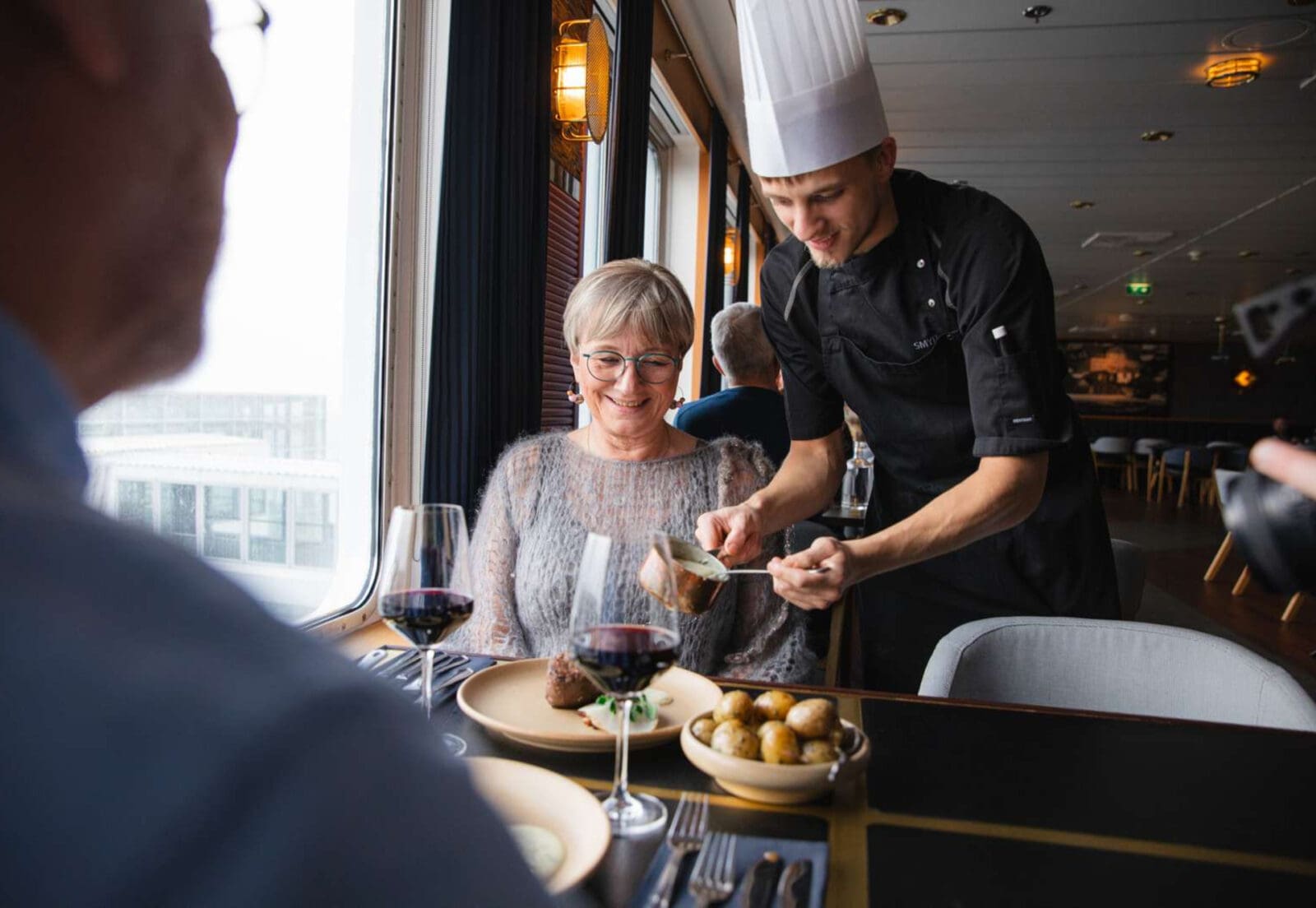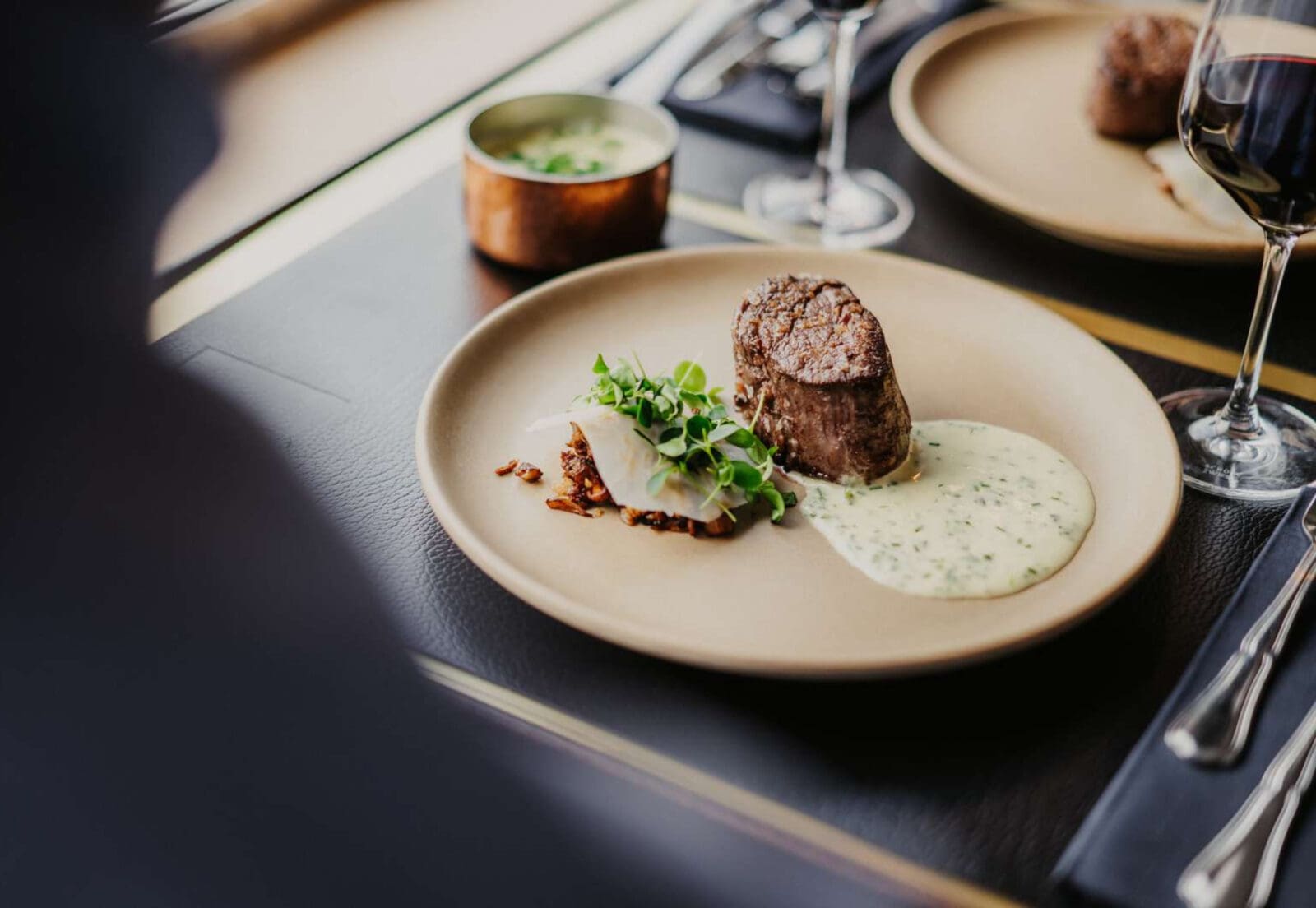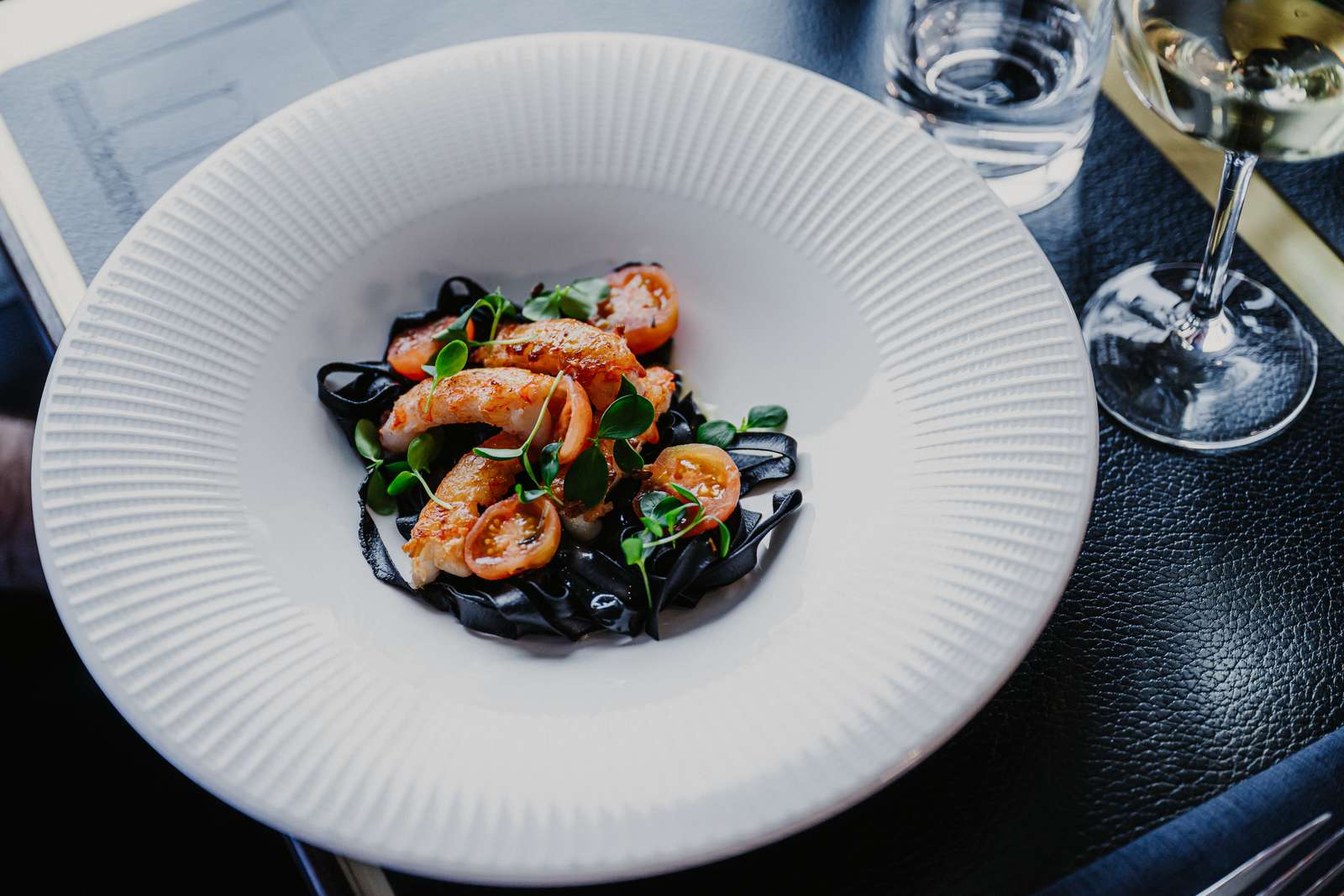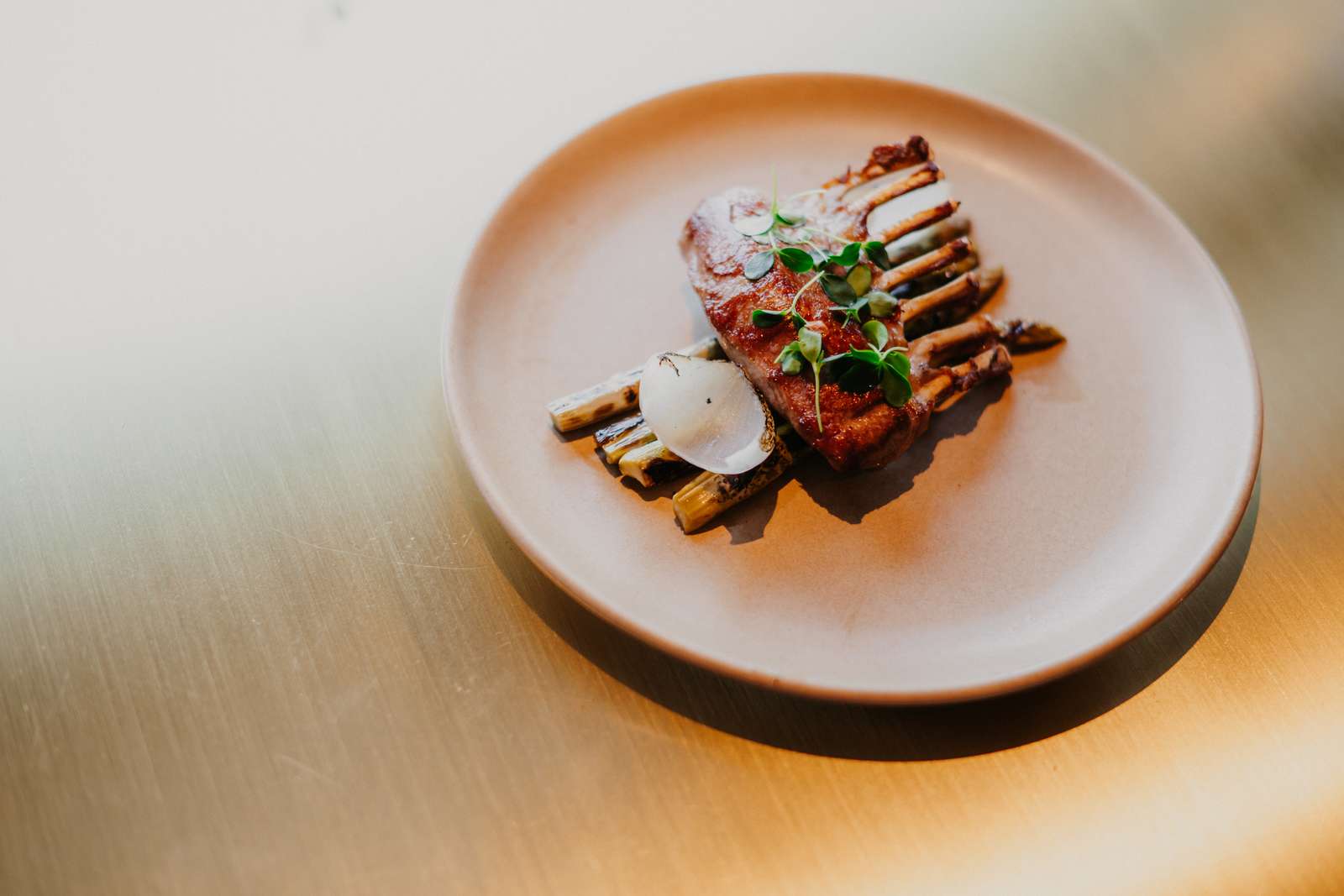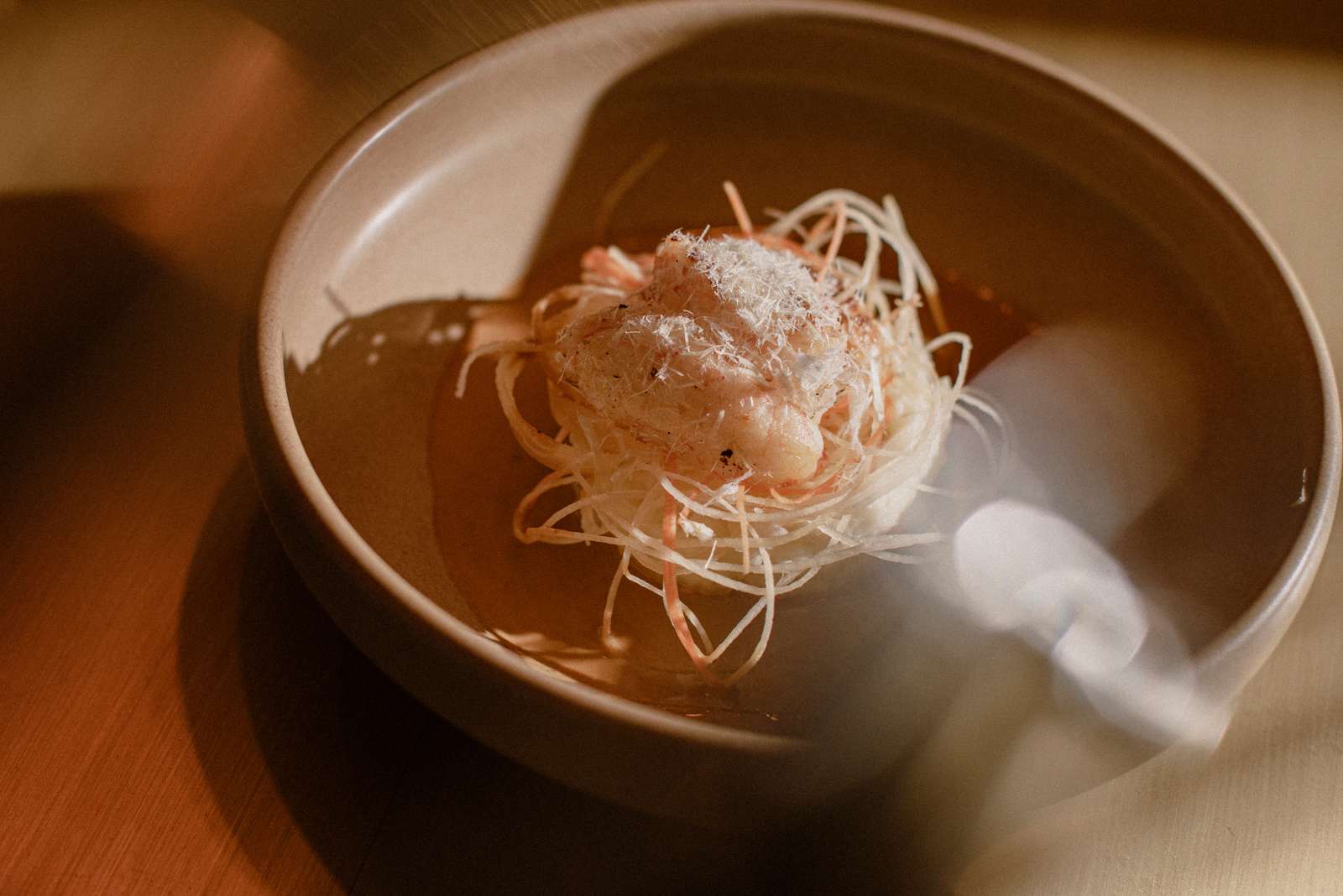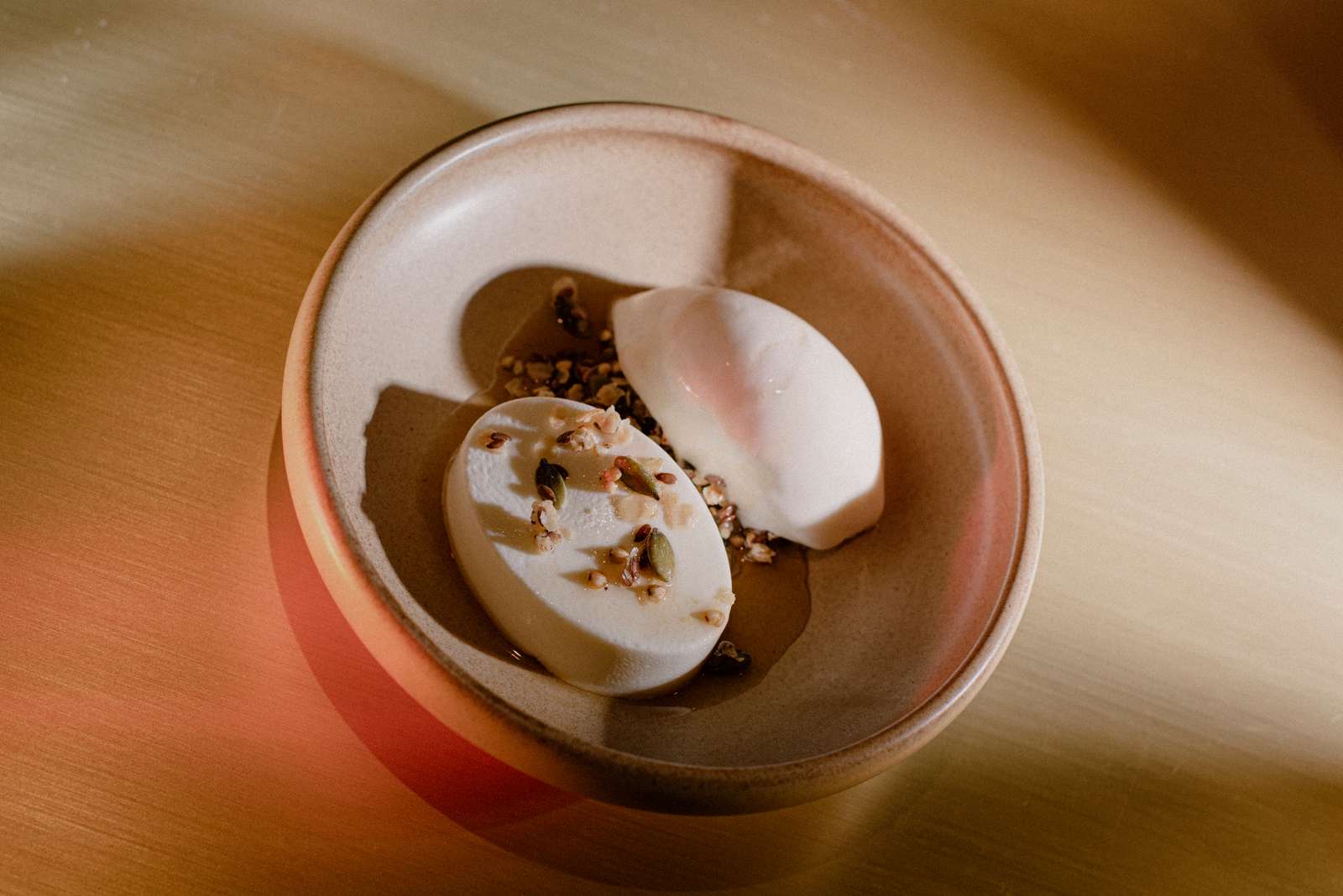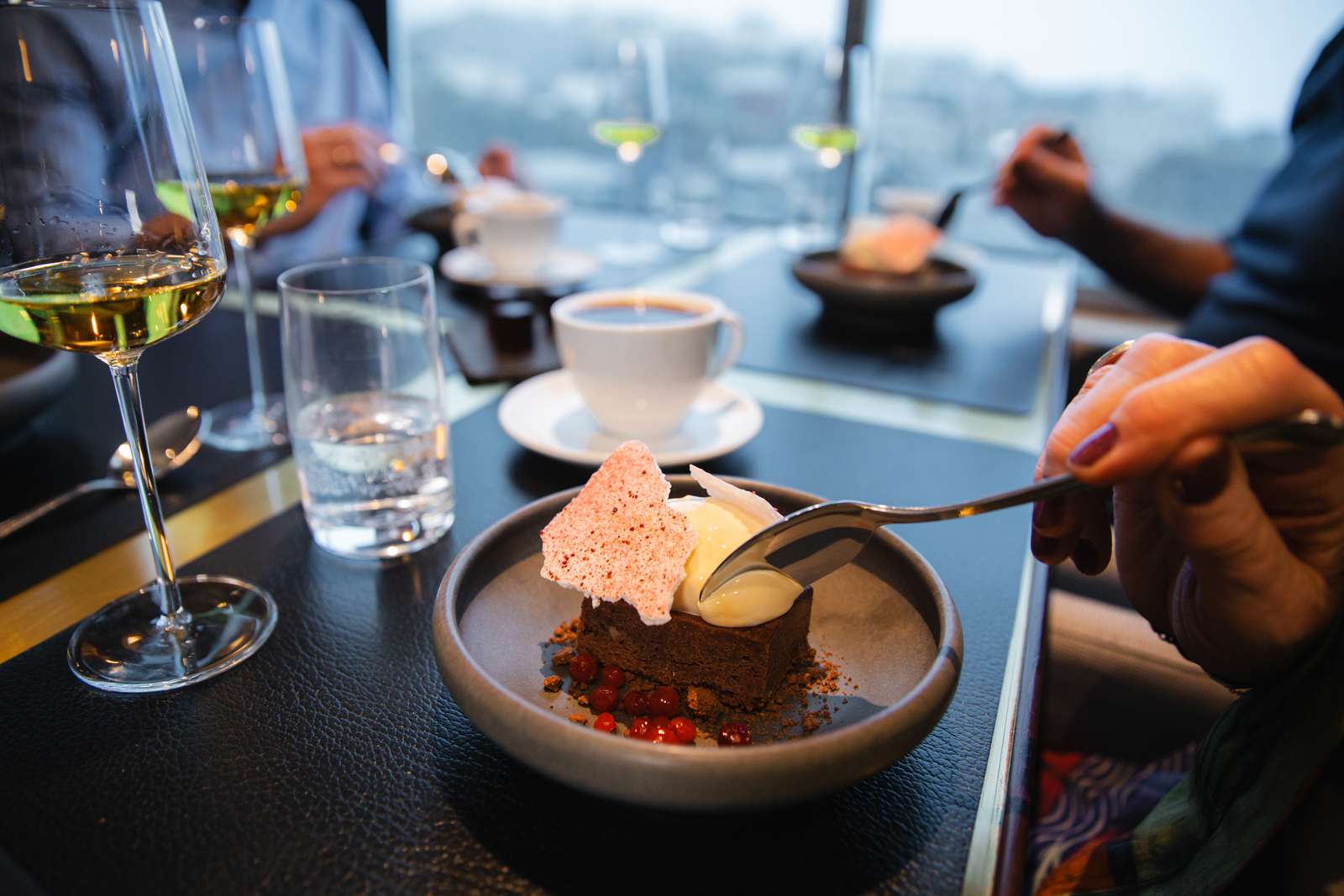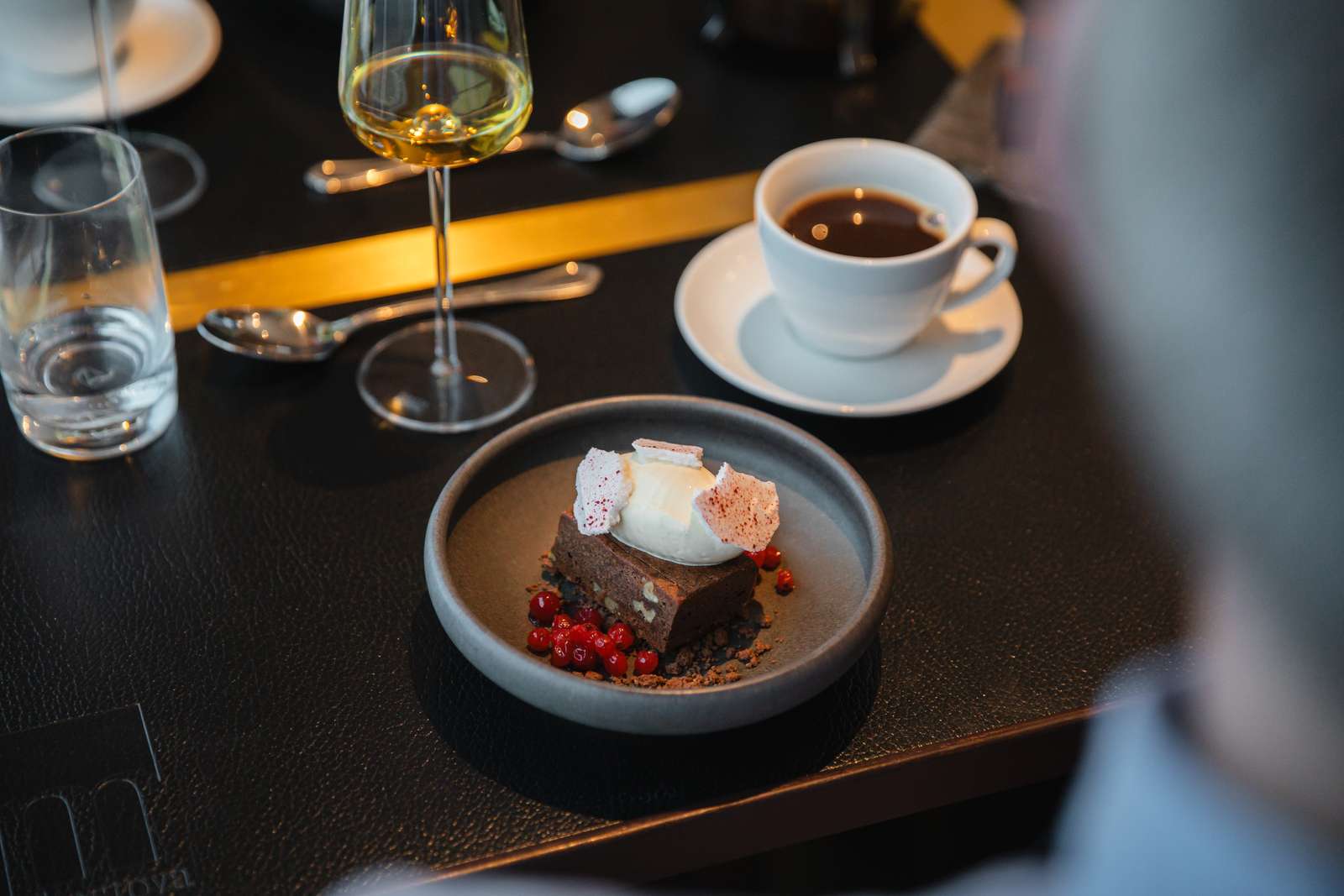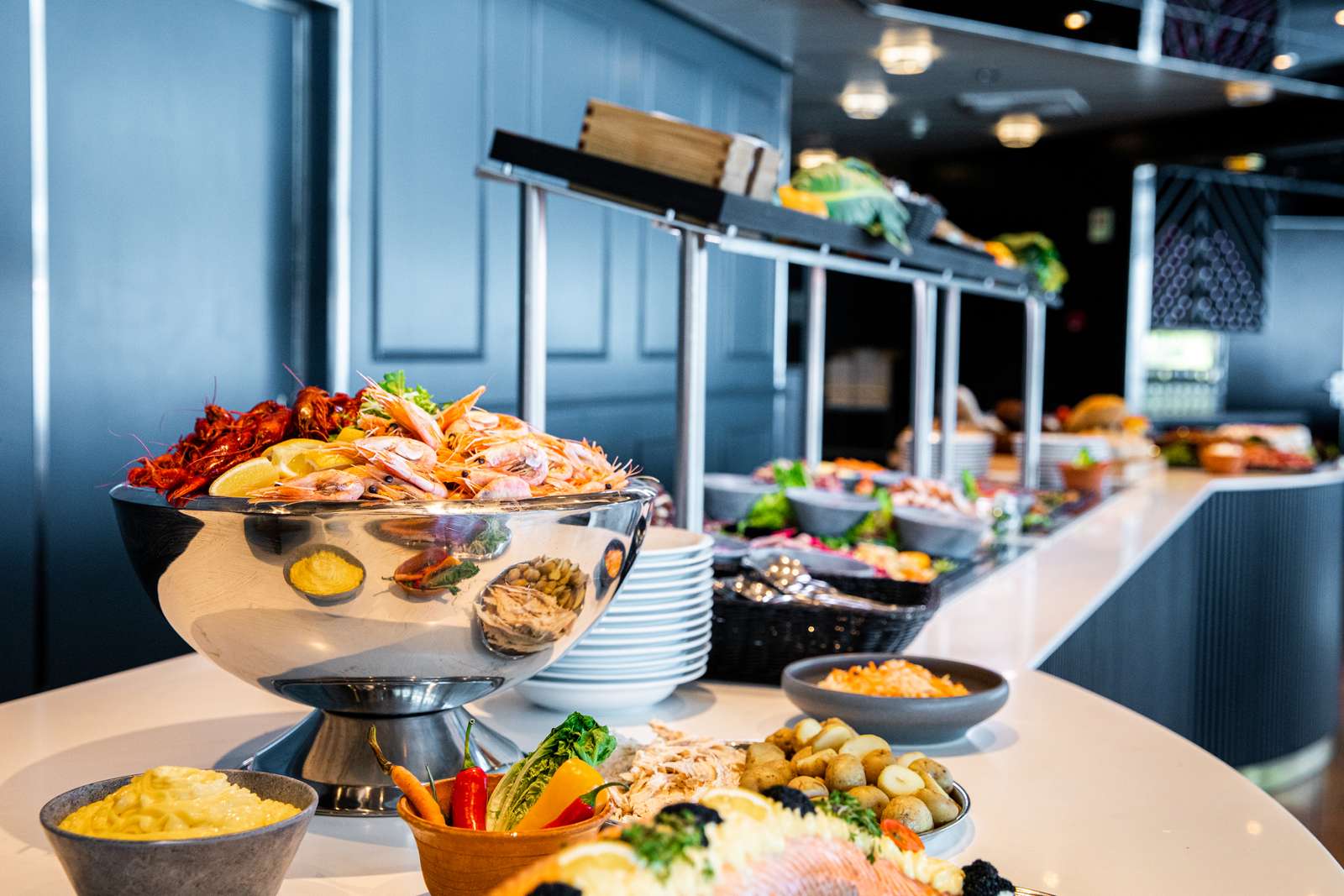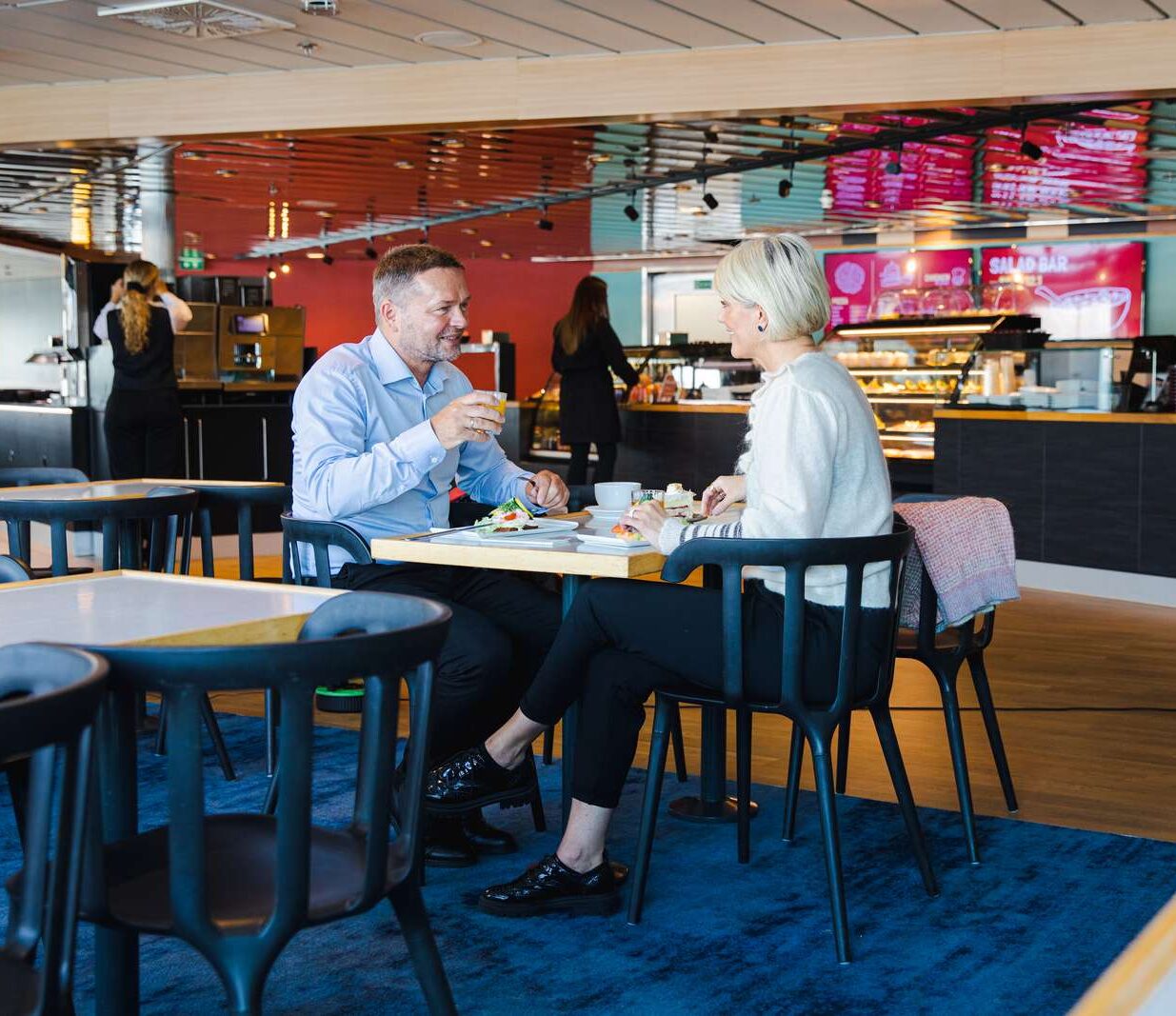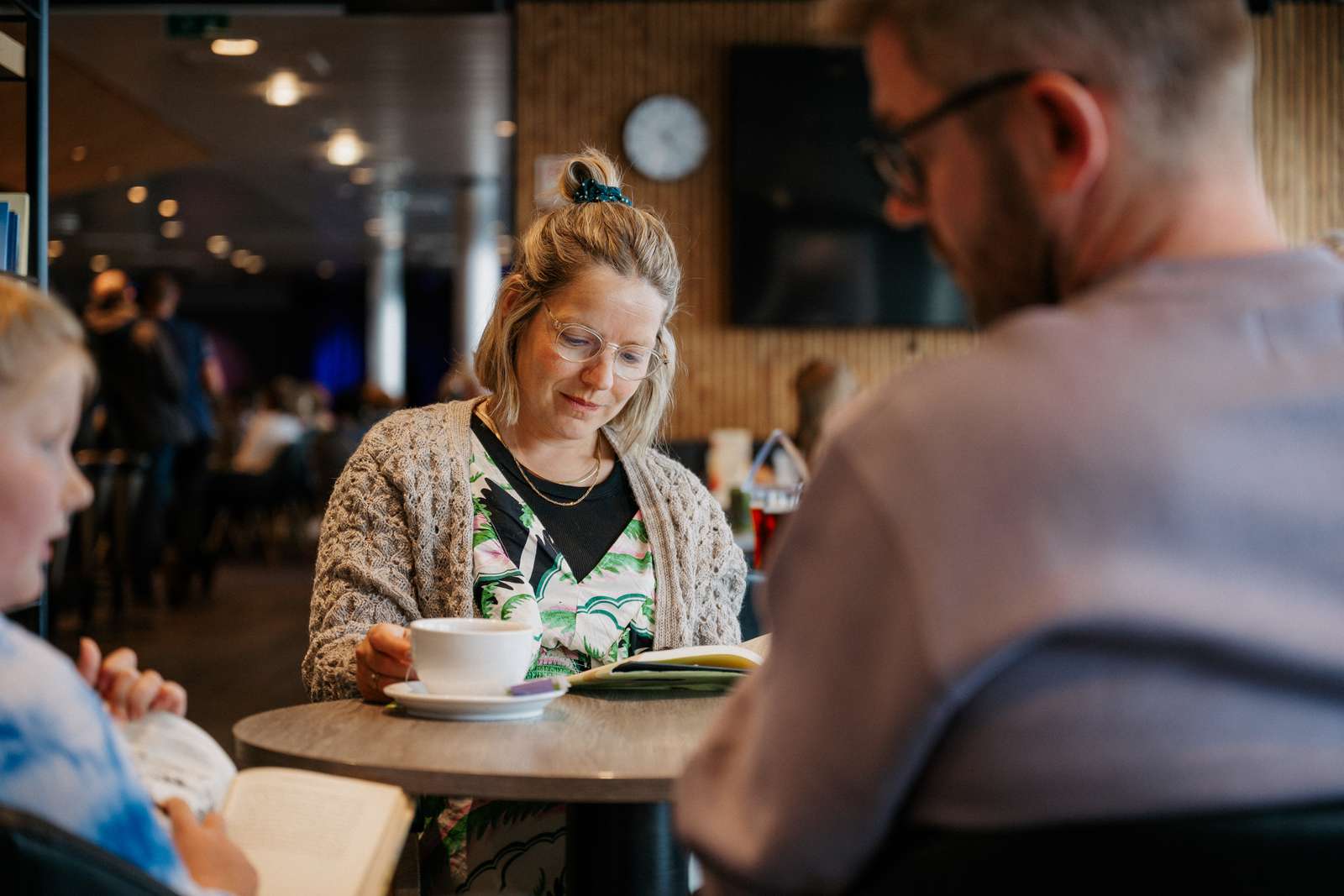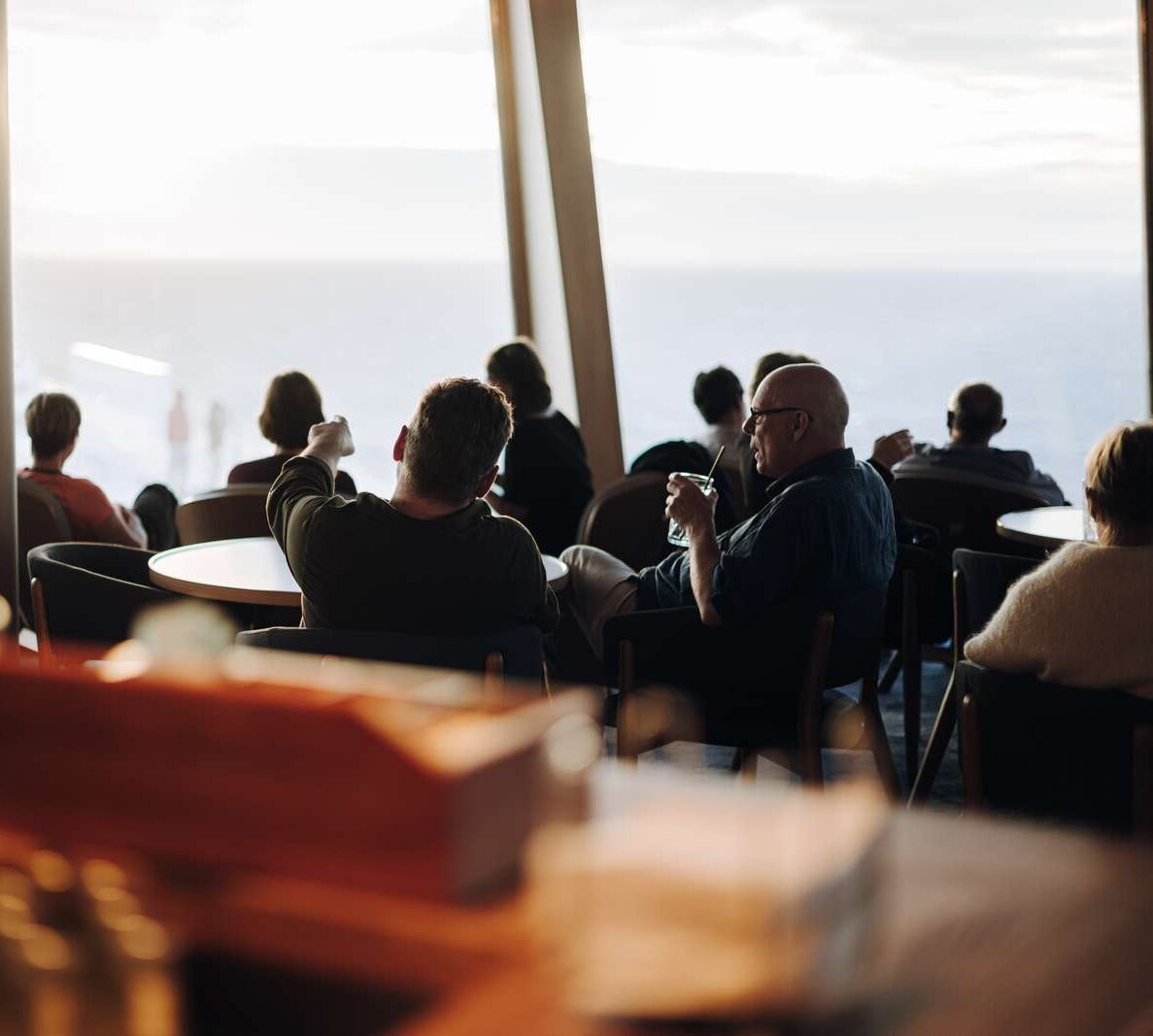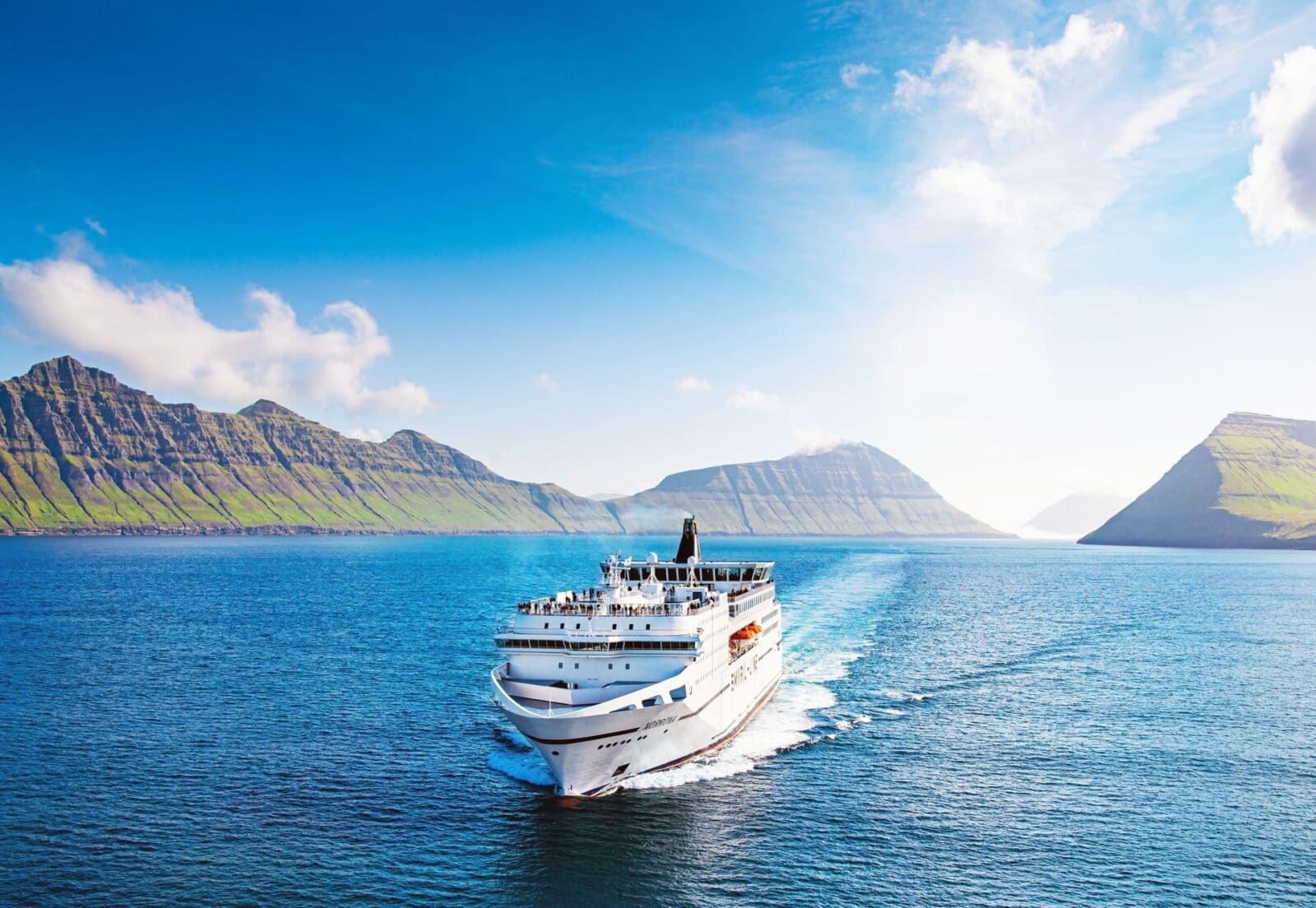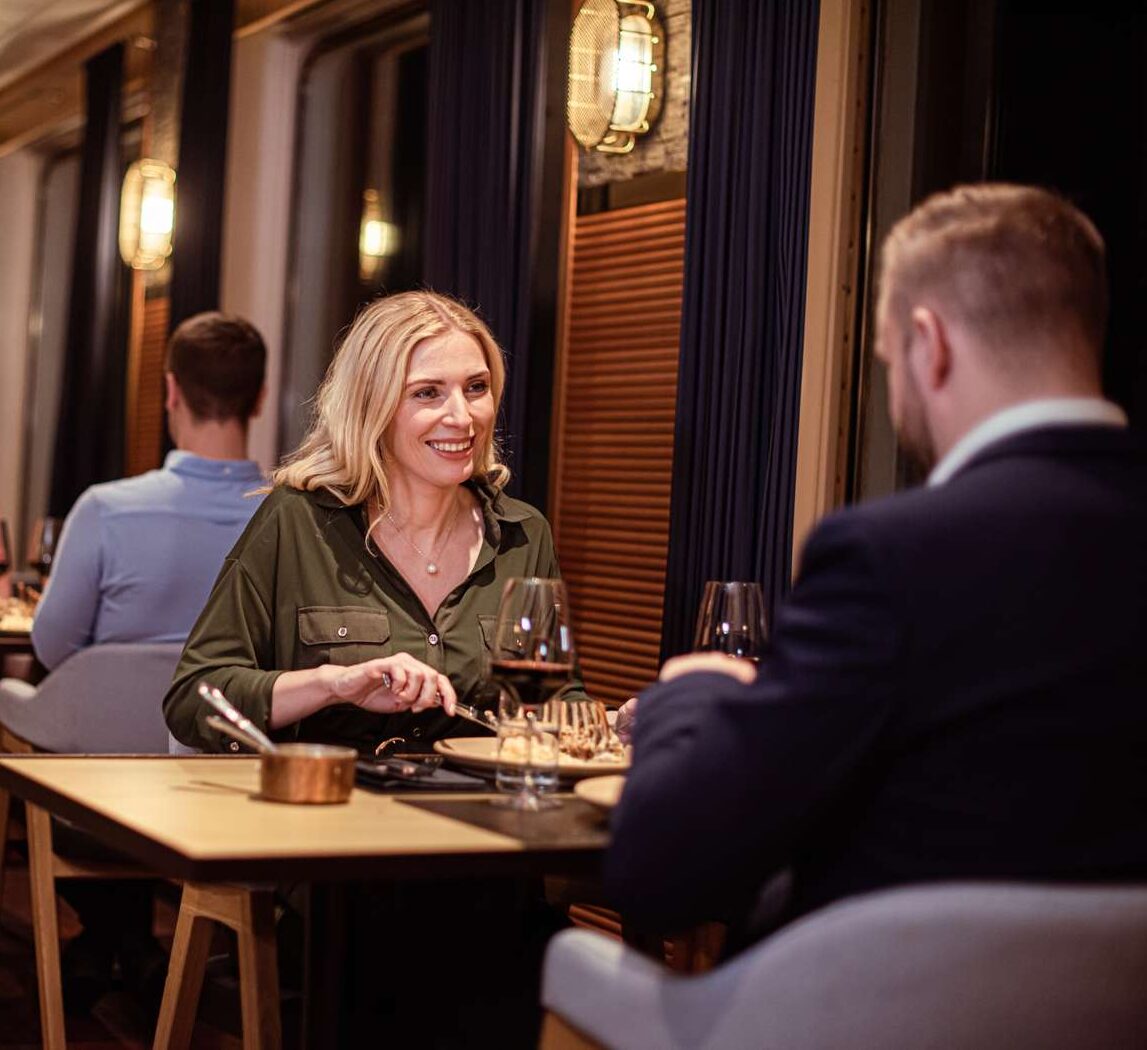
NORDIC CULINARY EXPERIENCES
Munkastova
Pre-book
& Save
Our a la carte restaurant, Munkastova, offers a relaxed atmosphere with a fine selection of Nordic cuisine.
Secure your spot and book:
· Lunch
· 3-course evening menu
Onboard, you can upgrade to a 5-course or 7-course menu. Vegetarian, gluten-free, and lactose-free options are also available.
Order your meals when booking your trip or add them later via My booking.
Lunch Prices
2 deluxe open-faced sandwiches with schnapps.
Adult € 22 / onboard € 23
Child 3-15y € 15 / onboard € 16
Children’s menu available.
3-Course Menu Prices
Adult € 64 / onboard € 67
Child 3-11y € 32 / onboard € 34
Child 12-15y € 45 / onboard € 47
Children’s menu available.
Faroe Best awards
Munkastova received two Faroe Best awards in 2021. This was the first year that the Danish Dining Guide nominated Faroese gastronomy with these awards.
🏆 Fish & Shellfish + Fermented of the Year
🏆 Dessert/Patisserie of the Year
Furthermore, the Chef profile of the Year 2021 was Janus Einar B. Sørensen, Executive Head Chef in Smyril Line.

Step Inside Munkastova
Get a virtual tour and get inspired in our à la carte restaurant.
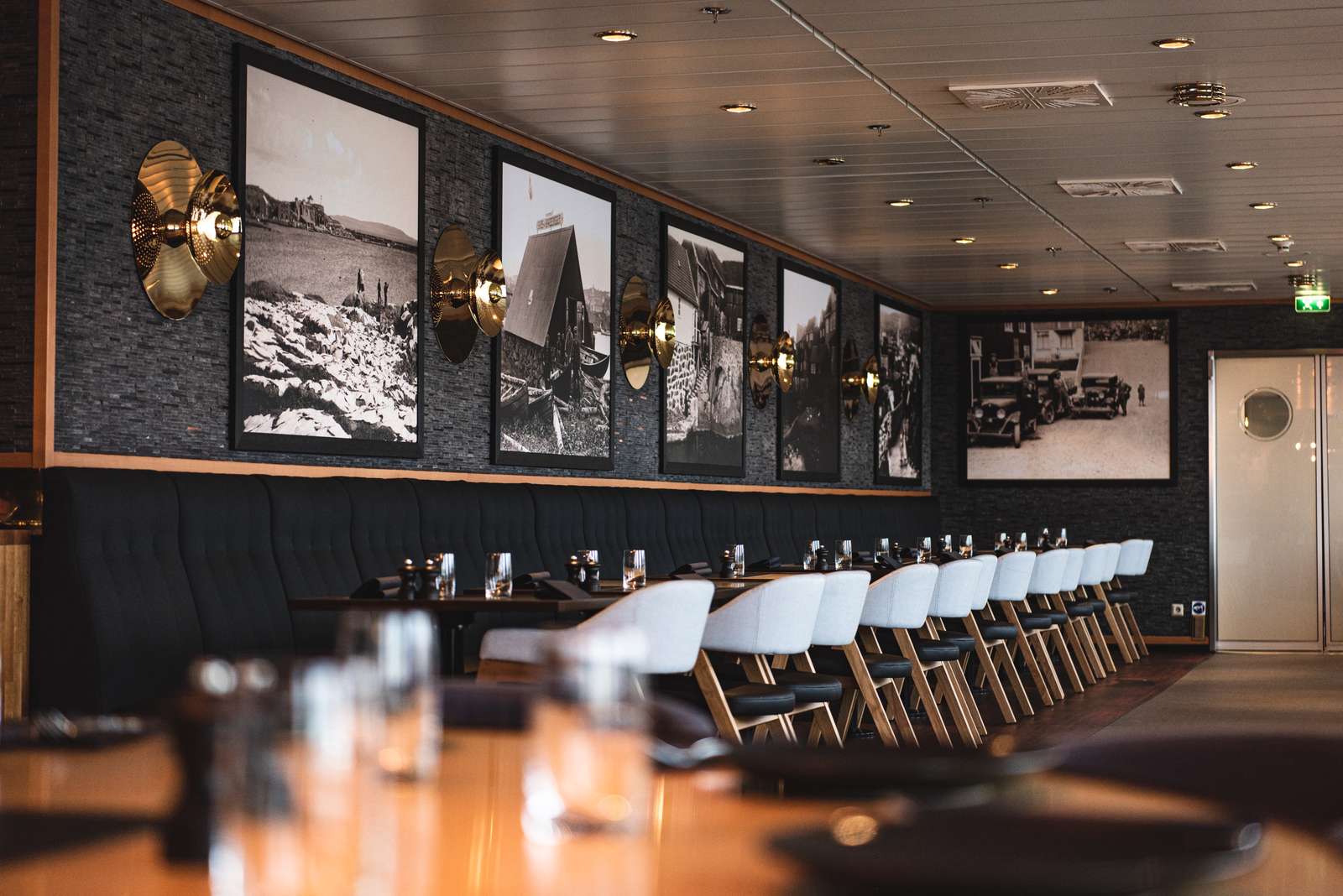
The Origin of
the Name Munkastova
The restaurant is named after the oldest house in Tinganes. Munkastova is one of the first red wooden houses you pass on a stroll from á Reyni to Tinganes and it most likely predates the 16th century. It once was one of the grandest houses in Tórshavn.
The name Munkastova can be translated as ‘monk house,’ but has nothing at all to do with monks. It is, derived from an older name, Murkoven, recorded in 1619, which refers to the building’s double external walls in stone masonry. It was only at the medieval bishop’s seat in Kirkjubøur that this wall technique was used in the Faroe Islands. Large rocks were stacked to form the wall and small flat stones were wedged in between. The mortar was skilpur, which was made up of sand mixed with broken mussel shells and crushed animal bones.
Theories abound about the use of Munkastova. It may have been built as a church, and there are accounts of services held there. Another theory is that Munkastova was built as a head office of the Hanseatic League. These German merchants ran the trade monopoly in the Faroe Islands in the late Middle Ages. It is also said that tax was collected in Munkastova. Back then tax would have been paid in wares such as salt fish, fish oil, knitted woollen stockings and sweaters.
Munkastova was one of the very few houses still standing after the big fire of 1673, which reduced the buildings south of Munkastova to ashes. At the time, there were rumours of arson intended to conceal irregularities in the monopoly trade accounts.

